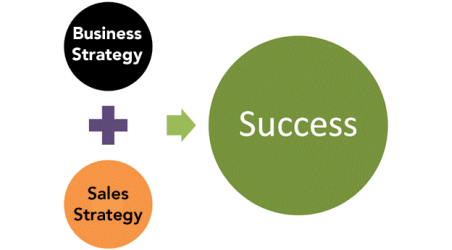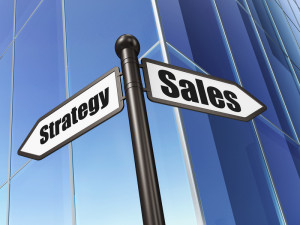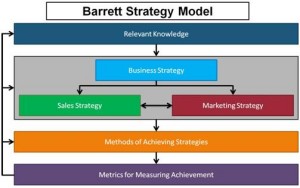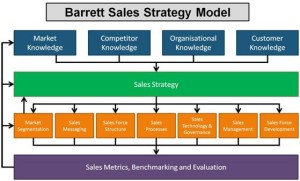
For too long now sales has lived in the shadow of corporate and marketing strategies, but these tend to provide limited direction. They are usually too broad and generalised or too narrow, only focused on financial results. That makes them of little tangible value in the pragmatic world doing business. That being said Selling is often seen by management as the unit that gets the business in; a tactical function in the value chain at best.
However, selling is much more complex than just getting in business. Selling is where the ‘rubber hits the road’; where the concept of micro-marketing and micro market segmentation, which best describes sales strategy, focuses your business and your sales efforts in a way that directs salespeople on a sustainable basis and tells you if your business, marketing, and sales strategies are viable and paying real dividends.
Sales Strategy is vital to business success, yet very poorly understood or executed in businesses.
Our findings and sentiments are endorsed by Frank Cespedes, a Senior Lecturer at Harvard Business School and Faculty Chair, in his article ‘You can’t do strategy without input from sales’ recently published in the Harvard Business Review blog. Cespedes says amongst other things that:
“Selling is, by far, the most expensive part of implementation for most firms. Yet, relatively few strategies—some studies indicate less than 10%–carry through to successful execution…”
 “In any business, value is created or destroyed in the market with customers, not in planning sessions or training seminars. Without credible sales input, any strategy runs the risk of dealing with yesterday’s market realities, not today’s… Selling in your firm can’t generate sustained returns if it’s not linked to your strategy.”
“In any business, value is created or destroyed in the market with customers, not in planning sessions or training seminars. Without credible sales input, any strategy runs the risk of dealing with yesterday’s market realities, not today’s… Selling in your firm can’t generate sustained returns if it’s not linked to your strategy.”
“One big problem is that in business schools, daily practice, and strategic planning, sales and strategy are treated as separate worlds. In academia, there is remarkably little written about how to link strategy with the nitty-gritty of field execution. Few of the many, many books and articles on strategy formulation have much, if anything, to say about the role(s) of a company’s sales channels in executing strategy. In fact, sales advice, if it’s even discussed, usually revolves around a combination of “reorganizing” and “incentives.””
You can see the dilemma facing many organisations, large and small. Very few people know how to develop and implement a Sales Strategy, let alone an effective sales strategy.
An effective business strategy needs to be underpinned by both a pragmatic Sales Strategy and a Marketing Strategy working together in concert to deliver real outcomes. We need to know the difference between each of these disciplines:
- A Business Strategy is the means by which an organisation/division sets out to achieve its desired ends (objectives). It can simply be described as a long-term business planning. Typically a business strategy will cover a period of about 3-5 years (sometimes even longer).
- A Marketing Strategy presents the broad marketing approach that will be used to achieve the objectives and develops the right marketing mix to achieve the goals.
- A Sales Strategy is how the business is going to organise its sales efforts across the value chain to go to market, who it is going to sell to and how it is going to create real value within the given market place with its customers. A sales strategy focuses on a time frame of no longer than 18 months – 2 years.
Let’s take a look at two models here:
Model A: This is a high level representation of the flow of thinking, information, analysis, and action required in developing an effective business strategy that is connected to the day to day of a business. You can see here that Sales Strategy is on an equal footing with Marketing Strategy, working in partnership and in concert with each other, not a subset of marketing as it has often been positioned.
Now let’s take deeper look into the details around Sales Strategy.
Model B: This is a high level representation of the flow thinking, information, analysis, and action that goes with Sales Strategy. Excellence is in the details. The Business Strategy sets the overall course but the Sales Strategy drives the details and implements a series of actions delivering immediate feedback to the business if the business and marketing strategies are working or not.
As mentioned many times, sales operations are complex in that they have many moving parts that are affected daily by markets, customers, competitors, governments, and the general cut and thrust of doing business. Just think PEST, and STEER.
Despite all these variables, a sales force driven by a focused sales strategy is a highly prized asset that drives better results for the organisation’s customers and the organisation itself. As Frank Cespedes says ‘You can’t do strategy without input from sales’.
Remember, everybody lives by selling something
Author: Sue Barrett




New Article Email Notification